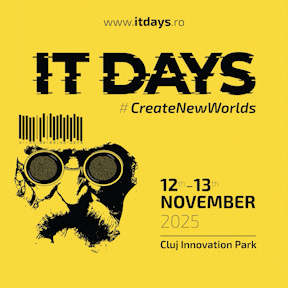PROGRAMMING
Introduction to Grails (III)
I hope the previous articles about Grails raise your interest on the framework to give it a try. Here comes the last article the “Introduction to Grails” series, presenting the following topics:
- Custom validators
- Internationalization
- Tag libs
- Url Mappings
- Persistence
PROGRAMMING
Introduction to Grails (II)
Let’s now create our login page for the application. As I mentioned in the beginning, Grails uses conventions a lot. This means that if you have a domain class called “User”, you need to have a “UserController” controller. If you have an action defined in a controller, like “login”, you need to have a view called “login” view under grails-app/views/user. To create views, Grails offer a script: generate-views com.todaysoftmag.gsn.User, but for the time being we can just create them by hand.
PROGRAMMING
Introduction to Grails (I)
Grails este un framework web bazat pe Java și Groovy. Grails împrumută concepte din frameowork-uri precum Rails în dorința de a simplifica web development-ul în Java. Grails is a web development framework developed on top of Java and Groovy stacks. Grails borrows concepts from frameworks like Rails, and builds on these concepts to simplify web development in Java.
PROGRAMMING
5 Java practices that I use
This article presents 5 Java practices that I use while coding. It’s interesting that simple things make your developer (and fellow colleagues) life easier. I have no intent to create some sort of top here, but just to illustrate things I consider helpful. Implement equals, hashCode and toString methods inherited from java.lang.Object. All 3 methods are part of java.lang.Object since JDK 1.0. They could be really useful when used in your classes as follows: Object#equals(Object obj): determines if the current object is equal with the object supplied as parameter.
PROGRAMMING
RESTful Web Services using Jersey
RESTful Web Services are services based on HTTP methods and the REST concept. There are usually four HTTP methods used to define services RESTful:
• POST: upload a new resource (create or modify). Repeated executions can have distinct effects.
• PUT: create a new entry in the collection. Repeated executions will have the same effect as the one obtained from a single IDEMPOTENT operation
• GET: identify a resource without modifying the source. The operation shouldn’t be used in creating
resources
• DELETE: delete a resource. Repeated executions will have the same effect as the one obtained from a single IDEMPOTENT operation.
PROGRAMMING
Agile Software Development using Scrum
Beginning of 2008, the company I was working for decided we need to become agile and use Scrum. I didn’t quite understand why we should change our way of working especially that we used to follow SDLC (software development life cycle): requirements, design, implementation, testing, maintenance and releases were scheduled at 3-4 months intervals using waterfall.
Conference TSM

VIDEO: ISSUE 109 LAUNCH EVENT
VIDEO: ISSUE 109 LAUNCH EVENT
Design contribution

























